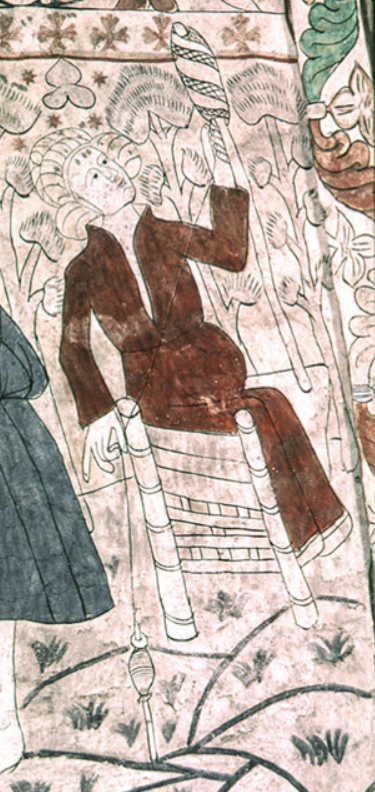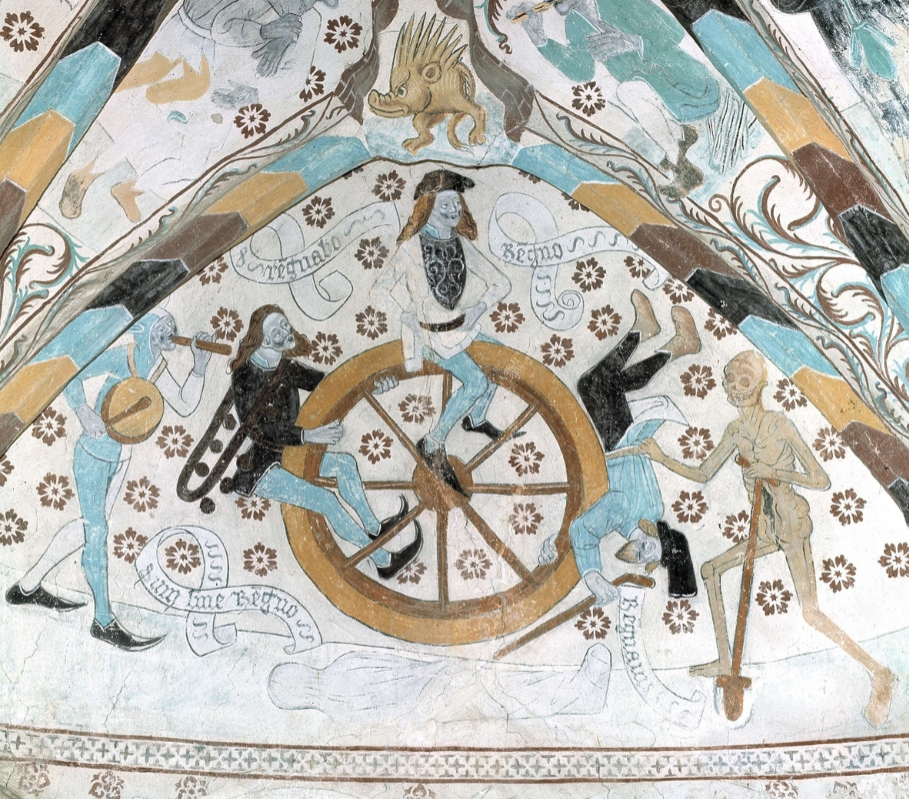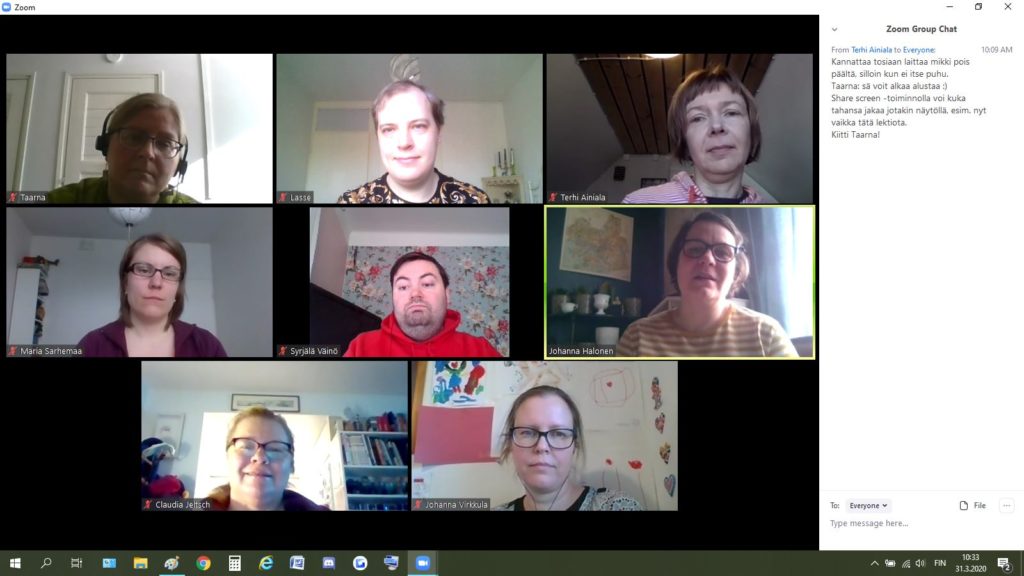av Lennart Ryman
Den 21 november 1487 inleddes en rättegång vid rådhusrätten i Stockholm med anledning av en ung kvinnas död. Det är kanske den mest omfattande brottsutredning som har bevarats från det medeltida Sverige. Rättegångsreferaten täcker sidorna 235–239 i det andra bandet av utgåvan av Stockholms stads tänkeböcker. Som jämförelse är handlingarna från ett mer normalt ärende införda omedelbart efteråt: ”Samma dag erkände Henrik Henriksson att han slog ihjäl färjekarlen vid Stäket. För det dömdes han till svärd. I from åminnelse.”
Efter flera förhör erkänner kvinnans husmor sig skyldig till misshandel med dödlig utgång. I förhandlingarna omtalas ett trettiotal personer: aristokrater, borgerskap, tjänstefolk och en bonde med sin son. Handlingarna blir därför ett tacksamt material för en betraktelse över tidens personnamnskick. Den tryckta texten och ett referat av händelserna är tillgängliga på webbplatsen Stockholmskällan. Här under finns en lista på de omtalade och på deras omtalsfraser.

Mickel Raukas hustrus piga och hennes närmaste omgivning
Det mest uppseendeväckande är att den mördade kvinnan aldrig namnges, trots den detaljerade framställningen. Från samtidens perspektiv var hennes namn tydligen oviktigt; hennes roll som piga i borgaren Mickel Raukas hus var det väsentliga. Hon kallas bara pigan med olika tillfälliga bestämningar, bl.a. ”den arma, döda pigan”. En annan av Mickel Raukas hustrus pigor presenteras i egenskap av vittne med namnet Marta. Vi får också reda på vad den mördade pigans far heter: Per Diekn från Pemars socken i sydvästra Finland. Hans identitet var viktig, eftersom han som närmast anhörig var den som skulle uppbära mansbot. Fadern bär ett av de vanligare binamnen i det medeltida Sverige (fornsvenskt Diækn, vilket kan tyda på skrivkunnighet). Att han omtalas med en svensk namnfras, trots att hans modersmål sannolikt är finska, är väntat; det är snarare regel än undantag att finska namnformer inte slår igenom i skrift.
Pigans husmor har det typiska omtalssättet för en stadgad borgerska. Det märkliga hustru Dorathea Michel Raukes, med hustrutitel och mannens namn i genitiv, är vanligt i stadsböckerna. Hon omtalas även flera gånger som ”Mickel Raukas hustru” och dylikt, och blir alltså i första hand identifierad i förhållande till sin man. Ett av vittnena är kanske borgaränka: Birgitta Swens i Mickel Raukas gård, där Swens troligen syftar på Birgittas make. Hon omtalas utan hustrutitel, vilket kan tyda på rätt låg status. Birgitta har en inneboende i sitt hus, den säkerligen ogifta Kaderin Arffuidz dotther.
Borgare
Den största gruppen i framställningen är borgare. De omtalas vanligen med förnamn och med ytterligare ett element, som har efternamnsliknande funktion: ett tillnamn, ett patronymikon eller en yrkesbeteckning (Erick Praal, Hinrik Ericsson, Benct bältare). Den sociala statusen för borgare som saknar yrkesbeteckning får anses vara känd av omgivningen; status framgår oftast inte av omtalssättet. Ibland anges eller antyds att det rör sig om en rådman (Anders Suensson kemmeneren respektive erlig man Erich Gislasson), medan i andra fall rangen lämnas omarkerad (Peder Skytte). Att en man är hantverksmästare visas vanligen med en yrkesbeteckning. Däremot förekommer normalt ingen yrkesbeteckning för köpmän; ett undantag är Claues Screddere mercator, där upplysningen att han är köpman är tillfogad för att visa att han inte är skräddare.
Ett särskilt namnskick tillämpas för bårdskärare (”kirurger”), som vanligen omtalas med titel och förnamn: mester Lodwijck. Omtalet av en av borgarna, Lasse, som har varit med och synat den döda pigan, bryter det prydliga mönstret. Det bör handla om en för skrivaren relativt okänd person. Han identifieras informellt men effektivt efter sin företrädare i äktenskapet: ”Lasse, som fick Pinnow-Heikes hustru”. Vi kanske har en liknande identifikationsstrategi i Mickel Rauka själv, som kanske i själva verket är gift med den ursprunglige Raukas dotter. En ”Mickel Raukamåg” är omtalad 1477, och det ligger nära till hands att anta att den personen är identisk med Mickel Rauka.

Fru Ingeborg och annat frälse
Märkligt nog tar flera riksråd aktiv del i rättegången. Här kan vi iaktta den strikta skillnaden mellan riddare, med ständigt utsatt herretitel, och väpnare, som trots sin ställning som riksråd får nöja sig med lösa bestämningar som ”ärliga och välbördiga män” eller ”väpnare”, och som ibland blir helt utan rangbeteckning. Talande är att ställningen som riksråd inte omtalas på något sätt, utan förutsätts vara känd. Med motsatt tendens omtalas riksföreståndaren Sten Sture som ”vår herre och hövitsman”.
En man som uppträder som borgensman för hustru Dorotea är Mats Lytke. Hans sköldebrev från 1483 är bevarat, och han borde alltså höra till frälset, men detta tycks inte ha påverkat vare sig hans verksamhet som borgare och köpman eller hans omtalssätt. Även en av rikets förnämsta kvinnor omtalas, när hon ber om nåd för hustru Dorotea, den danske riddaren Åke Axelssons dotter och riksföreståndarens hustru ”fru Ingeborg herr Sten Stures”. Vi kan ana att stadsboksgenren är mycket snål med att skriva ut patronymika för kvinnor, oavsett status. Särskilt gäller detta gifta kvinnor, som ju mycket ofta identifieras i förhållande till sina män.
Jöns i Söderby och hans son
Nyckelroller i förhandlingarna intas av bonden Jöns och hans son. Jöns presenteras först som Jöns i Söderby, vilket säkert var precist nog för omgivningen. När riksråden är med i rätten höjs dock formalitetsgraden, och han skrivs Jöns Persson j Söderby pa Mwnsöön. Han omtalas även som bonden och som ”förskrivne bonde Jöns i Söderby”. Jöns son presenteras omständligt som ”Jöns Perssons son i Söderby i Munsö, hetandes Peder Jönsson”. Senare kallas han även pilten.
Avslutning
Den som har orkat läsa så här långt håller nog med mig om att omtalssättet för de uppträdande i målet mot Mickel Raukas hustru har betydande social relevans. Från namnforskningens synpunkt är det intressant att studera hur namn samverkar med andra språkliga enheter för att identifiera individer och tilldela sociala positioner.
Den text som vi har undersökt är betydligt mer avslöjande än flertalet moderna texter, trots, eller delvis tack vare, att vissa särdrag är förbryllande. Varför lyfts vissa förhållanden fram medan andra är helt omarkerade? Delvis kan det nog förklaras med texternas perspektiv, skrivna som de är med utgångspunkt i en manlig, borgerlig elit. I grund och botten levde man också i så små samhälleliga förhållanden att stora luckor i hur omtalssättet återspeglade den samhälleliga strukturen inte innebar några större kommunikativa problem.
Stadsböckernas värld ter sig säkert mycket främmande för de flesta av oss. Stora steg mot dagens verklighet tas under 1600-talet, då bl.a. en sorts revolution i omtalssätt genomförs i Sverige, med införande av släktnamn och nya titlar. Några exempel från 1700-talets början är ”landshövdingen högvälborne baron Olof Törnflycht”, ”grevinnan högvälborna fru Christina Lewenhaupt”, ”handelsman Mats Fagerholm”, ”hattstofferareänkan hustru Eva Margareta Schröder”, ”drängen Eric Malmsten”,”Hushållerskan Maria Berling”. Ett nytt samhälle manifesteras i nya omtalssätt. Ännu en revolution inträffar som bekant under 1900-talet, med en drastisk reducering av bruket av titlar och även av efternamn. Vad säger det om dagens svenska och kanske även nordiska samhälle och självbild? Är vi jämlika, individualistiska och kanske en smula infantila?
De omtalade:
Pigan, omtalad som: pigan (preciserat med bl.a. ”den piga som han förde hit in i staden”, ”den döda pigan”, ”den sjuka pigan”, ”den döda pigan, som låg framför Huvendals port, som hade tjänat Mickel Rauka”, ”den arma (fatiga) döda pigan”). Pigans far: Per Diekn i Pemars socken.
Mickel Raukas hus, omtalat som: Michel Raukes hwss, Michel Raukes gardh. Dorotea, omtalad som: ”Mickel och hans hustru”; Michel Raukes hwstru; hustru Dorathea Michel Raukes; hustru Dorathe. Mickel Rauka, omtalad som: Michel Raucka; Mickel; ”bonden själv” (i egenskap av borgensman för sig själv).
Vittnen till händelseförloppet: Rådmannen Peder Skytte: Peder Skytte. Jöns i Söderby, omtalad som: Jöns i Söderby (och hans lege quinno); Jöns Persson j Söderby pa Mwnsöön; Jöns; bonden; ”förskrivne bonde Jöns i Söderby”. Hans son: Jöns Perssons sön j Söderby j Mwnszöö, hetendes Peder Jönsson; pilten. Birgitta: ”Birgitta Swens som bor i Mickel Raukas gård”. Hennes hyresgäst: ”hennes huskvinna, som hette Kaderin Arffuidz dotther”; Kaderin. Pigan Marta: ”en piga som hette Marta, som också hade tjänat Mickel Raukas hustru med den döda pigan”; ”samma piga”; Martha.
Syningsmän: rådmannen och kämnären Anders Svensson: Andhers Suensson kemmeneren. Köpmannen Jakob Månsson: Jacop Mansson. Köpmannen Klas Skräddare: Claues Screddere mercator. Grytgjutaren Karl: Karl gritegiwtere. Bårdskäraren Ludvig : mester Lodwijck. Lasse: Lasse, Pynnow Heyke vxor fich.
Borgensmän: Köpmannen Henrik Eriksson: Hinrik Ericsson. Köpmannen Jöns Andersson: Jenis Andersson. Köpmannen Erik Prål: Erick Praal. Köpmannen Anders Schulte: Andhers Sculte. Köpmannen Olof Lång: Oleff Langh. Köpmannen Hemming Olsson: Hemmingh Olsson. Köpmannen och f.d. rådmannen Per Olsson: Pedher Olsson. Köpmannen och frälsemannen Mats Lytke: Mattis Lytke. Sadelmakaren Bengt: Benct beltere.
I rätten: Borgmästaren: borgamesteren. Riksråden: ”i ärliga ok välbördiga herrar och mäns närvaro, herr Ture Turesson, herr Ivar Gren, herr Erik Ottesson, riddare, Arvid Trolle och Bengt Åkesson, väpnare. – her Thwre Twresson; her Twre. her Ywer Gren. her Erick Otsson. Arffuit Trolle; Arffuit. Benckt Akasson. Rådmannen Erik Gislason: erlig man Erich Gislasson. Riksrådet och väpnaren Per Ragnvaldsson: Pedher Ragwalsson.
Förebedjare: Ingeborg Åkesdotter: ”ärlig kvinna fru Ingeborg herr Sten Stures”.
Högre instans: Sten Sture: ”vår herre och hövitsman”.
Anmärkningar: Jöns i Söderbys ”legokvinna” representerar ännu ett sätt att omtala kvinnligt tjänstefolk. Angivelsen ”köpman” är i ett par fall något osäker men mycket sannolik. – Flera av de inblandade personerna är upptagna i Sveriges medeltida personnamn (som har kommit fram till Iøsse). Se om syskonen Ingeborg Åkesdotter och Bengt Åkesson under Ingeborgh 1464 respektive Benedikt 1471 och om den obarmhärtiga husmodern under Dorothea 1487. En preliminär digital version av SMP finns här.
Litteratur
Kousgård Sørensen, John, 1985: Hustrunavne. I: Regional och social variation i nordiskt personnamnsskick. (NORNA-rapporter 29.)
Leibring, Katharina, 2011: Karin, Kirstin och Per Månssons svära – det tidiga 1600-talets kvinnonamn och namnfraser i Sverige. I: Studia anthroponymica Scandinavica 29.
Nedrelid, Gudlaug, 2009: Titlar og tilnamn i Heimskringla. I: Namn og nemne 26.
Peterson, Lena, 1983: Personnamn/personbeteckningar i några fornsvenska källor. Försök till indelning och beskrivning. I: Personnamnsterminologi. (NORNA-rapporter 23.)
Pettersen, Egil, 1981: Personnavn i Vest-Norge 1450–1550. Oslo.
Ryman, Lennart, 2009: Designations of origin in 15th-century Stockholm. I: Names in multi-lingual, multi- cultural and multi-ethnic contact. Proceedings of the 23rd International Congress of Onomastic Sciences. Toronto.
— 2015: Namnfrasvariation och sociala gränser i det senmedeltida Stockholm. I: Navne og skel – Skellet mellem navne. (NORNA-rapporter 91:1.)
— 2016 Nya attribut – nya namn. Namnfraser ca 1500 och ca 1700 – en jämförelse. I: Studia anthroponymica Scandinavica 33 (2015).
— 2018. Occupational designations in late medieval Stockholm. I: Namen und Berufe. Leipzig. (Onomastica Lipsiensia 13.)
Sundström. Agneta, 2004: Mæster Sigga hustrv, hustrv Birgitta Midakers och hustrv Elin i Sæby. Olika sätt att benämna kvinnor i Arboga stads tänkebok. I: Namn. Hyllningsskrift till Eva Brylla den 1 mars 2004. (Namn och samhälle 15.)
Wahlberg, Mats, 1999: Uppsalaborgare på 1600-talet. I: Runor och namn. Hyllningsskrift till Lena Peterson den 27 januari 1999. Uppsala. (Namn och samhälle 10.)
Uppdaterat 2. juni 2020












